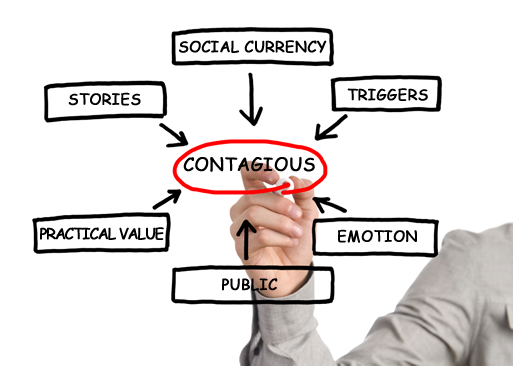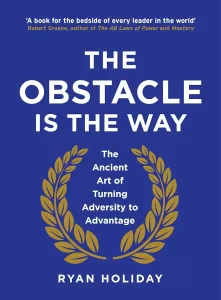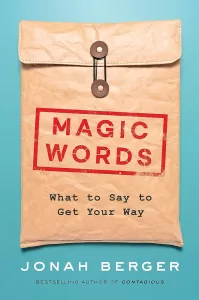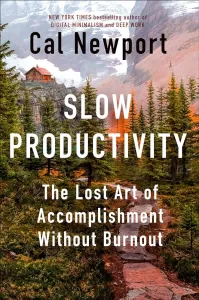Book Review: “Contagious”
Book: Contagious: Why Things Catch On by Jonah Berger
Reviewer: Bobby Powers
My Thoughts: 7 of 10
When I first heard about this book, I immediately thought of Made to Stick by Chip and Dan Heath (one of my favorite books of all time). After I started Contagious, I discovered that Berger was actually mentored by Chip Heath in grad school, hence the similarity in book topics.
Berger differentiates his work as follows: "Although the Heaths’ book focuses on making ideas ‘stick’—getting people to remember them—it says less about how to make products and ideas spread, or getting people to pass them on.” Contagious is the by-product of years of research on why/how ideas spread. Berger's real-world examples and research provide rich insight into how to craft products and ideas that generate word-of-mouth advertising.
Takeaways from the Book
Six Ingredients for Contagion
- Social Currency: Craft messages that others will want to share
- Triggers: Link products and ideas to prevalent cues
- Emotion: Focus on feelings over function
- Public: Make things more observable (it makes them easier to imitate)
- Practical Value: Highlight the incredible, distinctive value you offer
- Stories: Realize that information travels under the guise of what seems like idle chatter

Human Psychology
- “To get people talking, companies and organizations need to mint social currency. Give people a way to make themselves look good while promoting their products and ideas along the way.”
- “People often imitate those around them…People are more likely to vote if their spouse votes, more likely to quit smoking if their friends quit, and more likely to get fat if their friends become obese…Television shows use canned laugh tracks for this reason: people are more likely to laugh when they hear others laughing.”
- “Observability has a huge impact on whether products and ideas catch on.” This is a large reason why certain shirts and shoes become fads, but socks often do not cause social trends.
- “If you want to get people not to do something, don’t tell them that lots of their peers are doing it.”
- In regard to store discounts, “researchers find that whether a discount seems larger as money ($5 or $50 off) or percentage (5 percent or 50 percent off) depends on the original price. For low-priced products, like books or groceries, price reductions seem more significant when they are framed in percentage terms. Twenty percent off that $25 shirt seems like a better deal than $5 off. For high-priced products, however, the opposite is true…A simple way to figure out which discount frame seems larger is by using something called the Rule of 100. If the product's price is less than $100, the Rule of 100 says that percentage discounts will seem larger.”
- “People don’t think in terms of information. They think in terms of narratives. But while people focus on the story itself, information comes along for the ride.”
- “Make sure your desired information is so embedded into the plot that people can’t tell the story without it.”
Mental Triggers
- “Sights, smells, and sounds can trigger related thoughts and ideas, making them more top of mind…Triggers are like little environmental reminders for related concepts and ideas.”
- In mid-1997, the national news media frequently reported on NASA’s Pathfinder mission to Mars. The candy company Mars noticed a pleasant uptick in sales, despite the fact that they hadn’t changed their marketing, pricing, or promotions. “The media attention the planet received acted as a trigger that reminded people of the candy and increased sales.”
- Similarly, stores selling wine have found they can increase the sale of French wine by playing French music, German wine by playing German music, etc.
- “Products and ideas also have habitats, or sets of triggers that cause people to think about them. Take hot dogs. Barbecues, summertime, baseball games, and even wiener dogs (dachshunds) are just a few of the triggers that make up the habitat for hot dogs…Most products or ideas have a number of natural triggers…But it’s also possible to grow an idea’s habitat by creating new links to stimuli in the environment.”
- Marketers often use triggers to make consumers think of other products or ideas. Take this famous example used by an anti-smoking campaign to target Marlboro users…
Game Mechanics
- “Game mechanics are the elements of a game, application, or program—including rules and feedback loops—that make them fun and compelling…Good game mechanics keep people engaged, motivated, and always wanting more.”
- “People don’t just care about how they are doing, they care about their performance in relation to others…And this is how game mechanics boosts word of mouth. People are talking because they want to show off their achievements, but along the way they talk about the brands or domains where they achieved.”
- “But if a product or idea doesn’t automatically do that, it needs to be ‘gamified.’ Metrics need to be created or recorded that let people see where they stand.” Foursquare does this incredibly well by tracking checkins and awarding "Mayor" status for the most checkins at a given location.
Questions to Ask Yourself About the Six Ingredients
- Social Currency: "Does talking about your product or idea make people look good? Can you find the inner remark ability? Leverage game mechanics? Make people feel like insiders?"
- Triggers: "Consider the context. What cues make people think about your product or idea? How can you grow the habitat and make it come to mind more often?"
- Emotion: "Focus on feelings. Does talking about your product or idea generate emotion? How can you kindle the fire?"
- Public: "Does your product or idea advertise itself? Can people see when others are using it? If not, how can you make the private public? Can you create behavioral residue that sticks around even after people use it?"
- Practical Value: "Does talking about your product or idea help people help others? How can you highlight incredible value, packaging your knowledge and expertise into useful information others will want to disseminate?"
- Stories: "What is your Trojan Horse? Is your product or idea embedded in a broader narrative that people want to share? Is the story not only viral, but also valuable?"
Think you’d like this book?
Other books you may enjoy:
- Made to Stick by Chip Heath and Dan Heath
- The Tipping Point by Malcolm Gladwell
- Thinking, Fast and Slow by Daniel Kahneman
Other notable books by the author:
- Magic Words
- Invisible Influence
Want to become a stronger leader?
Sign up to get my exclusive
10-page guide for leaders and learners.






